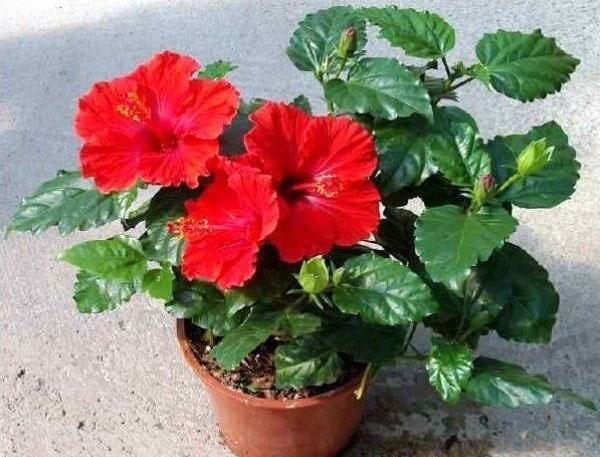Cutting indoor hibiscus
 Indoor hibiscus is a fast growing plant. This beautiful flower can grow up to 2 m in height under favorable conditions. Hibiscus is grown in sandy loam soil. In winter, vermicompost or other organic fertilizer is applied to the soil. Also in winter, hibiscus is placed under artificial lighting... Daylight hours of hibiscus must be increased to 15 hours a day.
Indoor hibiscus is a fast growing plant. This beautiful flower can grow up to 2 m in height under favorable conditions. Hibiscus is grown in sandy loam soil. In winter, vermicompost or other organic fertilizer is applied to the soil. Also in winter, hibiscus is placed under artificial lighting... Daylight hours of hibiscus must be increased to 15 hours a day.
Indoor hibiscus does not tolerate stagnant water, so you need to plant it in a pot with drainage holes. Without water drainage, the root system of the flower will rot and indoor hibiscus will die. Observing all the rules for caring for this amazing plant, you will grow a strong flower that can be cut by cuttings already in the second year after planting in a pot. See photos of hibiscus!
Harvesting cuttings
For grafting, you need to choose a long, semi-lignified branch. A suitable branch should have at least 8 leaves. Each leaf of the branch should be a deep green. The leaves will be pale green if the plant lacks light. If you water your indoor hibiscus too much, the leaves will turn yellow.
The branches of a weak plant are not suitable for grafting. In order to prepare cuttings, you must create comfortable conditions for indoor hibiscus. Place the pale flower on a sunny windowsill and reduce the watering of indoor hibiscus if its leaves turn yellow.
Over time, the color of the leaves will recover, and cuttings can be harvested. Hibiscus cuttings are carried out before the flowering of a houseplant. To harvest the cuttings, the branch is cut into 10 cm segments. The lower leaves are removed from the cuttings and the peduncles are cut off.
Rooting cuttings
Hibiscus cuttings are rooted in water or an infertile substrate. For the preparation of the substrate, one part of lowland peat and four parts of calcined river sand are used. This soil is poured into a seedling cup with drainage holes. Place the stalk in the ground so that the lower vegetative bud is 2 cm above the soil level. Within 10 days, the cutting is well watered. After two weeks, it will take root, then the cutting is transplanted into a pot with fertile soil. Sandy loam soil with the addition of vermicompost is well suited for hibiscus seedlings.
In order for the seedling to grow quickly, it is placed on the southern windowsill and the soil surface is sprinkled with garden perlite. This mulching material neutralizes spores of fungal diseases, so young hibiscus will not suffer from the "black leg".